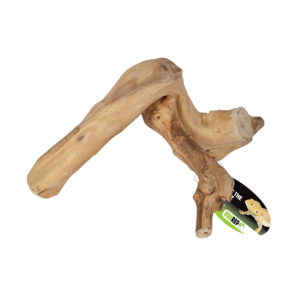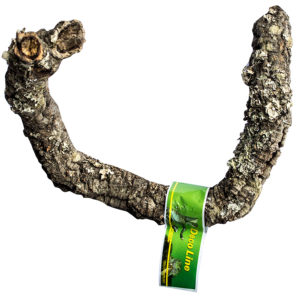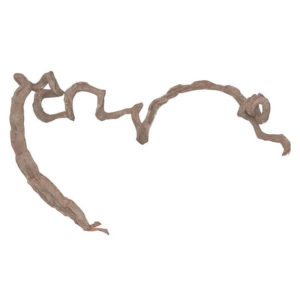Copyright 2021 Evolution Reptiles
All rights reserved.
Copyright 2025 Evolution Reptiles
All rights reserved.
All rights reserved.
So we’ve got the base layer of our bioactive setup, the living substrate that will turn the waste from our pets into plant food. We’ve added our leaf litter and our moss, so now it’s time to install the structure.
As mentioned in the last article, we’re going to be constructing a habitat for tropical forest geckos – but you can use these guidelines for any forest species, terrestrial or arboreal. All you need to do is adjust the height according to the habitat of the species you would like to keep.
These geckos need to climb, so we want to create an environment where they can self regulate their exposure to heat, UV light, and humidity both vertically and horizontally. At least one branch should stretch almost the full height of the habitat, and reach from one side to the other. Then the other spaces can be occupied by smaller branches, giving the gecko a choice of climbing and resting areas.
We can supply a good choice of branches and bark pieces that are eminently suitable for your habitat. Some of the items we regularly hold in stock are:

This is the wood of a coffee tree, harvested when the tree is 25 to 35 years old, when it becomes non productive. It is very hard and smooth, long lasting and resistant to rot. It does darken with age, and if used in a bioactive the portion in the soil will go very dark indeed. Sturdy and heavy, make sure it’s well anchored in the habitat. This makes an excellent centrepiece.

These are taken from the cork oak, and come in varying thicknesses and lengths. They are slow to decompose, and the rough surface is perfect for the aerial roots of climbing vines to grip. A goosefoot plant, philodendron or pothos vine will attach themselves to it very quickly. They are quite light, and easy to wedge in place. Because the wood is fairly soft, several branches can be screwed together to form a more stable platform.

These come in a huge array of shapes and sizes, and make an excellent centrepiece for your habitat. Most pieces have several knot holes that go through to the hollow interior, and if stuffed with moss and substrate these make really good planting pockets for bromeliads. They are also slow to rot down, so work really well in damp or even semi-aquatic habitats.
A word of caution! If you don’t pack them with substrate for use as a planting platform, then it’s best to cut them in half; that way they still make great hiding places for your pet, but they can’t wedge themselves in there.

Thinner than the java, this is sandblasted to clean it, and comes in various sizes. It’s very twisty, and looks really great in a planted setup.
More usually found in aquariums, this material works extremely well in the bioactive habitat. It is formed from hardwood trees (oak, beech) that die naturally and fall into rivers and swamps; the acidic, low oxygen environment prevents the wood from rotting, and gives it the dark brown colour. It can be heavy, but makes a sturdy addition to the landscape; plants root into it very easily, and it’s extremely slow to rot. It’s particularly effective in semi-aquatic habitats.
An African wood, it’s usually used in its native country for building houses and railway sleepers; it’s so hard that it’s termite resistant, and is also used for hard wearing flooring. Smaller pieces have a really nice pattern and shape, and although they can be heavy the contrast between the different layers in the wood can be very striking.
Plants don’t root into it as easily as the other woods described here, but moss will cover it well if it’s used as a waterfall. It doesn’t stain the water with tannins as much as the bogwood does, and is dense enough that it sinks easily when used in water.
Bamboo Root
The familiar long, straight tubes are ideal habitat for many smaller arboreal lizards and snakes. The hollow centre can make an ideal place to lay eggs or hide away, and a carefully placed clump can look very natural. It can be used horizontally or vertically, and is resistant to rot.
Bamboo is a member of the grass family, and contains some of the fastest growing plants on earth – up to 90cm (36”) in a single day!

Lianas. This is a general term for plants that climb up across larger trees. They are woody climbers that come in a huge variety of shapes and sizes and varying degrees of flexibility. They do decay relatively quickly in a bioactive setup, but provide excellent support for other climbing plants and mosses.
Tea Tree. An Australian species, the essential oil distilled from the Tea Tree is well known for its antibacterial, antifungal, antiviral and antiseptic properties. The branches we stock are dried, and are very resistant to decay. They are sturdy and light, and make excellent structures within the vivarium; as it is particularly long lasting, it makes a good base for vining plants to grow up. Air plants can be siliconed to it, although bromeliads don’t root to it easily.

An unusual looking branch, this is the woody internal structure of the cholla cactus which is native to the southwestern United States and northern Mexico. Available in a wide range of sizes, it is often sandblasted to reveal the inner structure; it’s ideal for use in arid habitat setups, although in the forest environment its use is predominantly to provide laying sites for smaller geckos, and cover for newly hatched babies.
There are other branches available, of course, but the above covers the commonly available ones. Once you’ve decided on which species the environment is going to be designed around, laid in the substrate and chosen the branches, the next step is to assemble the shapes within the vivarium.
Security is important; whilst we’re not designing for heavy lizards like monitors or iguanas, the structure must be stable and able to bear the inhabitants weight without collapse. If you’re building for Mourning or Electric Blue geckos, this isn’t likely to be a problem – but rather more care is needed if you’re putting together a home for a heavyweight leachianus gecko!
Now we’re ready for the finishing touch – time to choose plants!
Copyright 2021 Evolution Reptiles
All rights reserved.